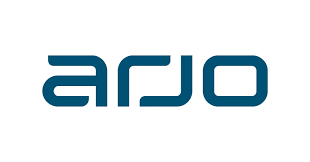Title Page
-
Conducted on
-
Prepared by
-
Campus Location
-
Unit
-
Unit
-
Unit
-
Unit
-
Specify unit:
-
Specify Clinic:
-
-
Unit
-
Clinic
-
Units
-
-
Units
-
Types of Staff Interviewed (RN, Tech, EVS, Pharmacist, etc.)
AHS Rounds
EOC Exits & Egress; Medication Room
-
All Staff must wear name badges with photo ID visible above waist
-
Egress is clear. Exit doors are not blocked and clear of clutter
-
Hallways clear with all equipment parked on one side or in alcoves
-
Fire rated doors must latch & close properly
-
No flammable items on fire rated doors
-
Nothing in front of medical gas valves, fire extinguishers or pull stations
-
Nothing stored under sinks throughout unit
-
No doorstops used or doors propped open
-
No overfilled sharps containers throughout the unit (replace when ¾ full)
-
Pt information (white board, WOWs & Chart) secured to ensure privacy
-
No food or beverages in patient care areas or nurse’s stations
-
All Pt. equipment labeled with clinical engineering sticker & current PMs
-
Overall cleanliness of unit (floors, walls, clutter, dust)
-
No unattended meds on Pyxis, WOWs, or throughout the unit
-
All insulin or multi-use vials are dated w/discard date in 28 days
-
Med Room: Med Room locked with access for authorized personnel only
-
Med Room: Med Prep areas are clean, uncluttered and separated from other areas
-
Pill cutters are individual use only. Must be labeled with patient name
-
Medication refrigerator and freezer temperatures logged and documented daily
-
Med Room check for expired medications and supplies
Crash Cart, Waived Testing and Infection Control Practices:
-
Crash Cart: Defibrillator is plugged in.
-
Crash Cart tidy and clean. No dust or excessive supplies on crash carts
-
Crash cart logs and Defibrillator check documented daily. Lock is intact.
-
Crash Cart: Check for expired supplies
-
Crash Cart leads are closed and sealed in their original packages
-
Infection Prevention: Contact Precaution sign posted and isolation cart placed outside of room
-
Waived Testing: Glucometer cleaned. Controls and Strips dated w/date opened/expiration date: Toss after 90 days
-
Hand gel stocked in all dispensers
-
No gloves, booties, hanging face masks while in hallway or public areas
-
No open Sani-Cloth containers
-
Hand hygiene performed when staff entering & exiting patient rooms
Patient Pantry/Kitchen; Clean and Soiled Utility Rooms ( C and S)
-
Patient Pantry: Patient food must be labeled with Pt. name and date
-
Patient Pantry: No staff food to be stored in patient refrigerator
-
Patient Pantry: Refrigerator temp checked daily & documented daily by dietary services
-
C: Linen carts must be covered and have solid bottoms throughout the unit
-
C: No supplies stored on the floor. Must be on pallets or wire shelving with solid bottom
-
C: No corrugated shipping boxes. Remove immediately
-
C: O2 tanks are stored upright in the holder. Full and empty O2 tanks are separated with signage
-
C: Check for expired medications and or supplies throughout the unit
-
C & S: No supplies stored within 18 inches from the bottom of the sprinkler head
-
S: No clean supplies or clean equipment to be stored in the soiled utility room
-
S: No storage of patient personal belongings
-
S: Floors are clutter free, allowing access to sink, hopper, and door
-
S: Approved enzymatic gel/ instrument cleaning supplies in room (if applicable)
-
S: All biohazard, pharmaceuticals, garbage containers must be clearly labeled and covered with a lid
-
S: Equipment requiring cleaning or services must be clearly marked
Best Practices and Opportunities for Improvement:
-
Best Practices Noted on the Unit:
-
Opportunities for Improvement Identified on the Unit
Other
-
Was any Service Recovery required? If yes, please explain:
-
Please share any Staff Recognition:









